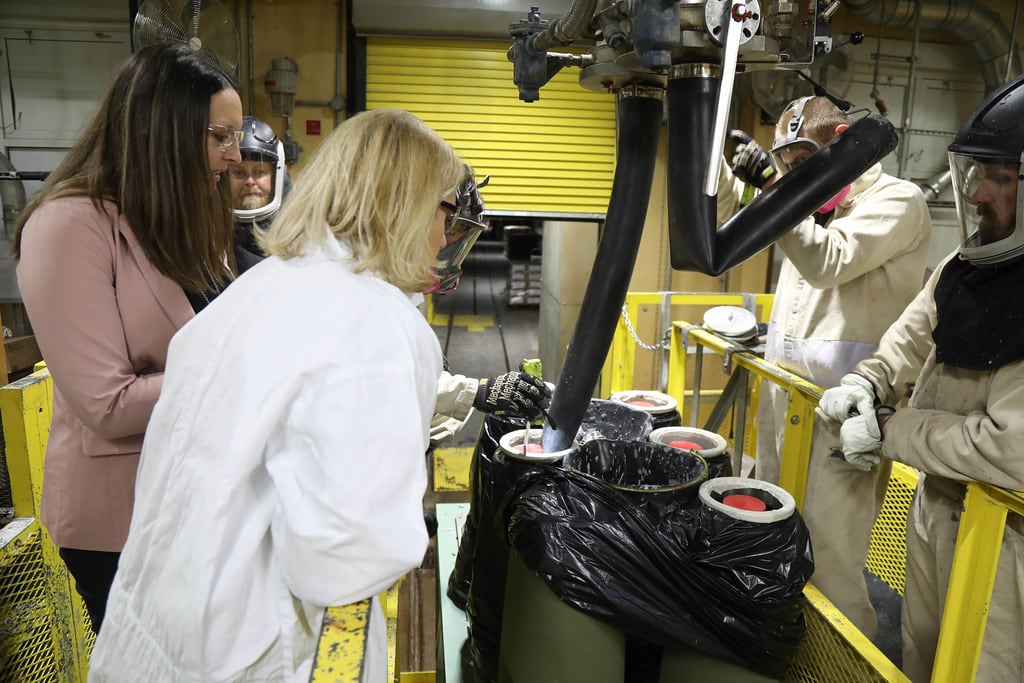WASHINGTON — The U.S. Army plans to spend $3.1 billion in emergency fiscal 2024 supplemental funding to boost domestic 155mm artillery munition production if lawmakers approve the pending White House request, the service’s acquisition chief said during a Nov. 7 press briefing.
Congress is considering President Biden’s budget package of roughly $106 billion in emergency supplemental funds. The measure aims to support U.S. and allies’ defense needs, including Ukraine and Israel.
While the Biden administration hopes to use much of that funding to boost industrial base capacity, a growing number of House Republicans oppose additional Ukraine aid and have instead pushed for a stand-alone $14 billion Israel supplemental.
The legislation is important for the Army so that it can “meet the growing challenges we face today and in the future,” Doug Bush said. “The lion’s share of this funding is being invested here in the United States.”
The Army has sent more than two million 155mm rounds to Ukraine as that country fights off a Russian invasion that began in February 2022. The support has led to a frantic uptick in replenishing the service’s stockpile.
The service has already taken major steps over the last year to strengthen its 155mm industrial base.
Prior to the war in Ukraine, the U.S. could build about 14,400 of the artillery shells per month. But as Ukrainian forces burn through the ammunition for howitzers sent to the country, the U.S. is hoping to ramp up production to roughly 100,000 shells a month by the end of calendar year 2025, Bush said.
So far, the Army has been making 155mm shells at a single service plant in Scranton, Pennsylvania, and a privately operated facility nearby. All of the shells are then transported to one place – Iowa Army Ammunition Plant – where they are packed with explosives.
Now, the service is under contract with General Dynamics Ordnance and Tactical Systems to build a new, mostly automated facility in Mesquite, Texas, to build more shells, as well as a company in Ontario, Canada – IMT Defense.
Last month, the Army also awarded $1.5 billion in contracts to nine companies in the U.S., Canada, India and Poland to boost global production of 155mm artillery rounds. The contracts included procuring 14.2 million pounds of bulk energetics, consisting of TNT and IMX-104 explosive, as well as 270,000 primers, 678,000 fuses and combustible cartridge cases.
RELATED

The pending supplemental budget request, if approved by Congress, would fund a $93 million upgrade to facilities to reestablish M6 propellant production at Radford Army Ammunition Plant in southwest Virginia, Bush said. The propellant is used to shoot the shells, but is no longer in production in the United States.
Another $600 million would triple the amount of IMX-104 explosive that is made at Holsten Army Ammunition Plant in Tennessee. The plant currently produces roughly five million pounds a year with a plan to increase to 13 million pounds, Bush said.
The Army would also use $650 million to design and construct a domestic TNT production facility, which will likely be at Radford Army Ammunition Plant. Currently, Bush said, there is no TNT production in the U.S. and the supply comes from allies. Poland is a major supplier, Bush noted, but because every country is ramping up production to support Ukraine and meet their own demands, “we think we need this onshore TNT production as well.”
Another $14 million would cover the construction and recommissioning of a black powder – an explosive combination of sulphur, carbon and potassium nitrate – production line with a company called Goex in Minden, Louisiana.
A total of $80 million of the supplemental would complete the expansion of 155mm metal parts production at Scranton and another $21 million at the nearby location in Hanover, Pennsylvania, Bush said.
The supplemental also includes $850 million to procure 600,000 artillery projectiles, Bush added, and another roughly $700 million to buy two million charges.
The Army is already producing 28,000 155mm projectiles a month. Over the next year, Bush said, the Army would likely hit 36,000 in the first quarter of the calendar year and would steadily grow closer to 60,000 by the end of FY24. The plan is to hit roughly 80,000 projectiles per month moving into 2025. “We’re talking toward the end of calendar 2025 would be when we get to 100,000, but there’s a lot of stuff inside that … That’s the goal, but all this has to come together to obtain those dates.”
If Congress does not approve the supplemental, Bush said the Army won’t hit its goal.
Bryant Harris, Defense News congressional reporter, contributed to this report.
Jen Judson is an award-winning journalist covering land warfare for Defense News. She has also worked for Politico and Inside Defense. She holds a Master of Science degree in journalism from Boston University and a Bachelor of Arts degree from Kenyon College.








